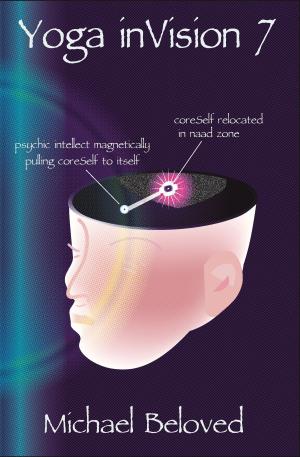| Author: | Michael Beloved | ISBN: | 9780983381778 |
| Publisher: | Michael Beloved | Publication: | April 10, 2014 |
| Imprint: | Michael Beloved | Language: | English |
| Author: | Michael Beloved |
| ISBN: | 9780983381778 |
| Publisher: | Michael Beloved |
| Publication: | April 10, 2014 |
| Imprint: | Michael Beloved |
| Language: | English |
This translation and commentary is a deep-read in-depth study of the instructions given to Uddhava who questioned Sri Krishna about the perplexities of material existence. Many readers of the Bhagavad Gita wondered if that discourse was the complete idea of Sri Krishna. After a fair reading of these instructions to Uddhava, anyone would conclude that the instructions to Arjuna were only part of the course. This is verified in the Bhagavad Gita itself where Sri Krishna said that initially He taught two yogas and then He said He would teach Arjuna the karma yoga path, leaving aside and discouraging Arjuna from taking the jnana yoga approach.
Interestingly, in the teaching to Uddhava, Krishna stated that He taught three yogas, namely karma yoga, jnana yoga and bhakti yoga. In the discussion with Arjuna, He admitted teaching only the first two of these three, with stress on karma Yoga which was recommended for Arjuna. The complete teachings of Sri Krishna are given in the Uddhava Gita.
Incidentally, the title, Uddhava Gita, was not assigned in the original text which is part of the Srimad Bhagavatam, just as the title Bhagavad Gita was not listed in the Mahabharata from which it was extracted. Uddhava Gita may be called the Completed Bhagavad Gita or Bhagavad Gita Purna. All unanswered questions which Sri Krishna either avoided or answered partially are fully dealt with in the Uddhava Gita. For that matter instead of advocating karma yoga which is detachment with worldly life, Sri Krishna insisted on jnana yoga, which is detachment and full abandonment of worldly life.
Karma yoga means that a person leaves aside the result of his or her activities, both the good and bad reactions, while jnana yoga means that a person refuses both the results and the opportunities for activity. And that was the path which Krishna recommended to Uddhava.
This translation and commentary is a deep-read in-depth study of the instructions given to Uddhava who questioned Sri Krishna about the perplexities of material existence. Many readers of the Bhagavad Gita wondered if that discourse was the complete idea of Sri Krishna. After a fair reading of these instructions to Uddhava, anyone would conclude that the instructions to Arjuna were only part of the course. This is verified in the Bhagavad Gita itself where Sri Krishna said that initially He taught two yogas and then He said He would teach Arjuna the karma yoga path, leaving aside and discouraging Arjuna from taking the jnana yoga approach.
Interestingly, in the teaching to Uddhava, Krishna stated that He taught three yogas, namely karma yoga, jnana yoga and bhakti yoga. In the discussion with Arjuna, He admitted teaching only the first two of these three, with stress on karma Yoga which was recommended for Arjuna. The complete teachings of Sri Krishna are given in the Uddhava Gita.
Incidentally, the title, Uddhava Gita, was not assigned in the original text which is part of the Srimad Bhagavatam, just as the title Bhagavad Gita was not listed in the Mahabharata from which it was extracted. Uddhava Gita may be called the Completed Bhagavad Gita or Bhagavad Gita Purna. All unanswered questions which Sri Krishna either avoided or answered partially are fully dealt with in the Uddhava Gita. For that matter instead of advocating karma yoga which is detachment with worldly life, Sri Krishna insisted on jnana yoga, which is detachment and full abandonment of worldly life.
Karma yoga means that a person leaves aside the result of his or her activities, both the good and bad reactions, while jnana yoga means that a person refuses both the results and the opportunities for activity. And that was the path which Krishna recommended to Uddhava.















